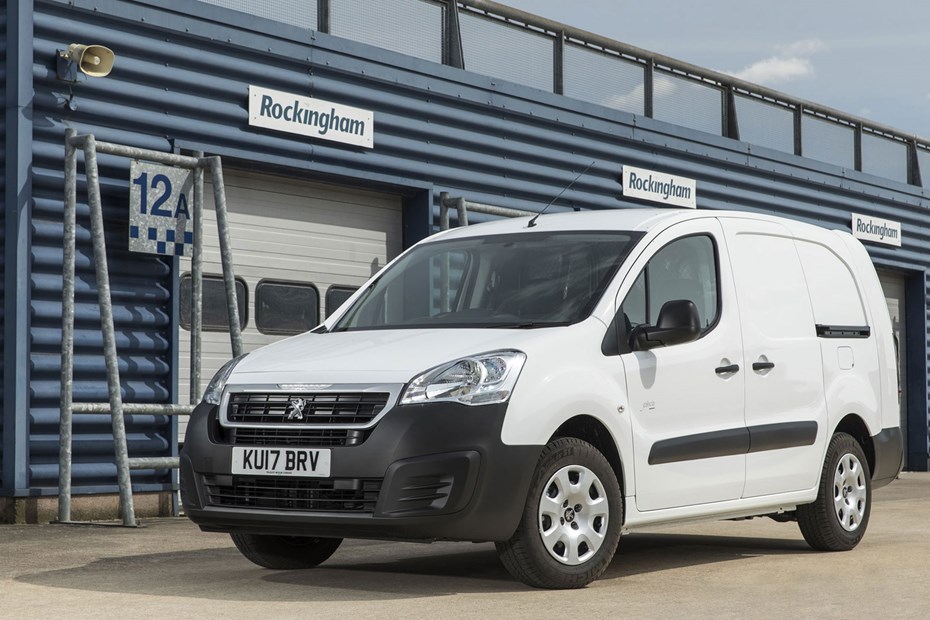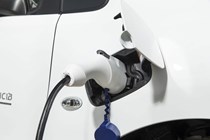Parkers Vans and Pickups review of the new-for-2017 Peugeot Partner L2 Electric small van
The current Peugeot Partner may not be long for this world – it, alongside its Citroen Berlingo cousin, is due to be replaced by an all-new model in 2018 – but that doesn’t mean Peugeot is keeping its small van range static. Meet the new, larger Partner L2 Electric.
Yes, Electric. This just goes to show there’s life in the old dog yet – despite it also being the joint-oldest small van on the market; both Partner and Berlingo date back to 2008.
You probably won’t be surprised to learn that there’s a new Citroen Berlingo L2 Electric available now, too. We will endeavour to review this model separately in the future, but they are essentially the same vehicle, so what goes for one also goes for the other.
Wasn’t there a Peugeot Partner Electric van already?
Absolutely. And there is still. But that’s an L1 model, meaning it has a shorter body length and smaller load area.
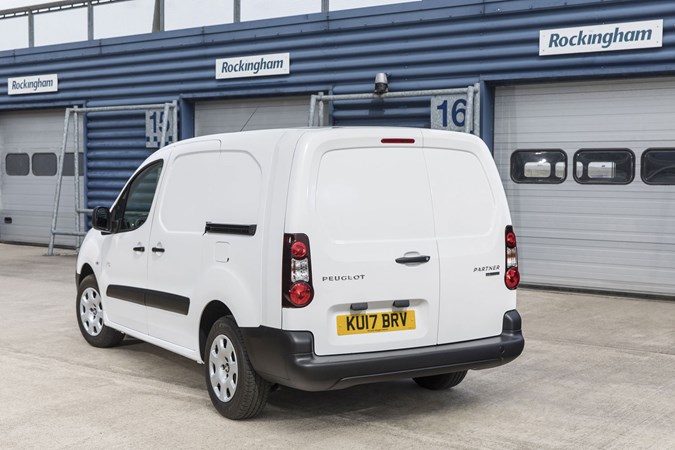
The introduction of the L2 variant comes as Peugeot-Citroen looks to take its electric vehicle (EV) presence considerably more seriously – which means taking on the clear electric small van leaders, Nissan and Renault.
It’s the Nissan e-NV200 that’s particularly in the crosshairs here, as the Partner L2 offers up to 4.1 cubic metres of load volume, very nearly matching the class-leading 4.2 cubic metres offered by the Nissan.
The e-NV200 was the best-selling electric van in all of Europe in 2016, and the UK is its biggest market – helped by Nissan’s well-established brand association with EVs in general.
Both the Nissan and the Renault Kangoo ZE massively outsold the Peugeot-Citroen Electric models – which wouldn’t be so bad if it wasn’t for the clear fact that in conventional diesel and petrol terms, the Partner and Berlingo combo massively outsells the NV200 and Kangoo.
Clearly, Peugeot-Citroen’s Electric vans are not pulling their weight. The introduction of the L2 models is an attempt to redress this.
Is this strategy going to work?
It looks good on paper. Concentrating on the Partner – as that’s what we’ve been driving – the L2 Electric has a cheaper list price, matches the 106-mile driving range (according to official NEDC testing; we’ll come back to this) of its electric rivals, and comes in a single, generously-equipped SE trim level.
Of particular note is the inclusion of DC rapid charging as standard, something you have to pay more for from Renault and Nissan. Using an appropriate rapid charger (found at an increasing number of public charging stations), this means you can refill the Partner’s battery pack to 80% in just half an hour.

Not as convenient as chugging in some diesel, perhaps, but 30 minutes is a damn sight more handy than the eight to 10 hours it takes to charge via an AC domestic (three-pin plug) or fast charger – though the Partner does include a provision for this as well.
Even so, if you’ve got a regular van route that falls within the Electric’s typical range, simply plug it in overnight in this instance.
Another factor in the Partner’s favour is the standard three-seater cab layout, not available from Renault or Nissan. The middle seat is tight, but offers more kneeroom than the diesel Partner, due to not needing a manual gearlever.
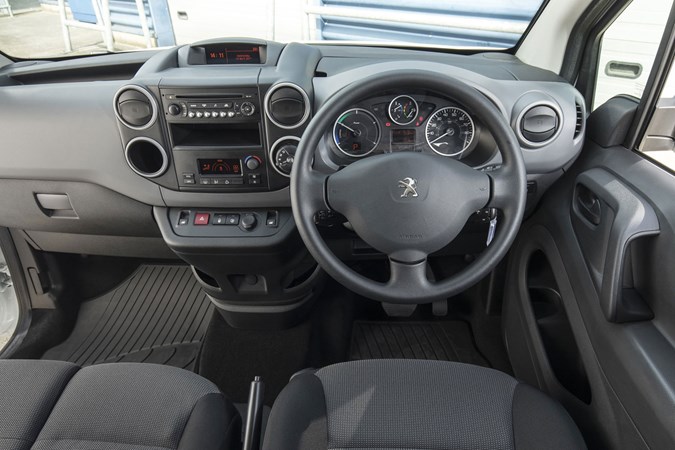
Versus an equivalent Partner SE diesel, you’ll also be pleased by the standard-fit inclusion of air-conditioning; not just an added bonus for the driver, the van actually uses this to keep the batteries cool while they’re charging.
So, what’s the real-world range of the Partner Electric?
Peugeot freely admits the 106-mile claimed figure is a tad optimistic, but reckons you should be able to regularly achieve 80-90 miles out in the real world.
As with all electric vans, how far you can go is very much dependent on driving style, vehicle load and road conditions as well, but this is verified by Partner Electrics on fleet with the police, where scene of crime support vans regularly achieve in excess of 80 miles when required.
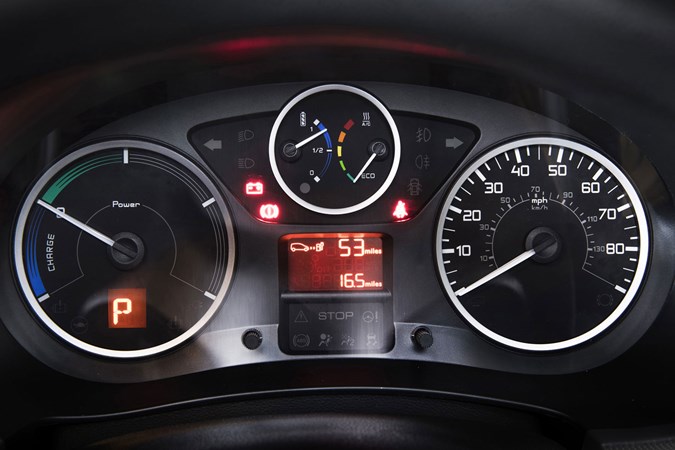
One slight problem for Peugeot – and Citroen – in this regard, however, is that the Renault Kangoo ZE is about to get an upgrade that will significantly boost its driving range. Renault reckons the new model will achieve more than 120 miles per charge in the real world (168 miles on paper).
Parkers Vans will be driving the improved Kangoo ZE in July 2017.
What’s the Peugeot Partner Electric like to drive otherwise?
Like all electric vehicles, as long as you can get over the range anxiety – the constant worrying about whether you’ve got enough juice left to get home – driving is a very pleasant experience.
There’s no diesel rattle here, just a mild hum that quickly disappears into the background once you start travelling over about 20mph.
What’s more, because electric motors deliver instant torque – 200Nm in the case of the 49kW (equivalent to 67hp) motor used here – response to your right foot is crisp and urgent, at least when travelling around town.
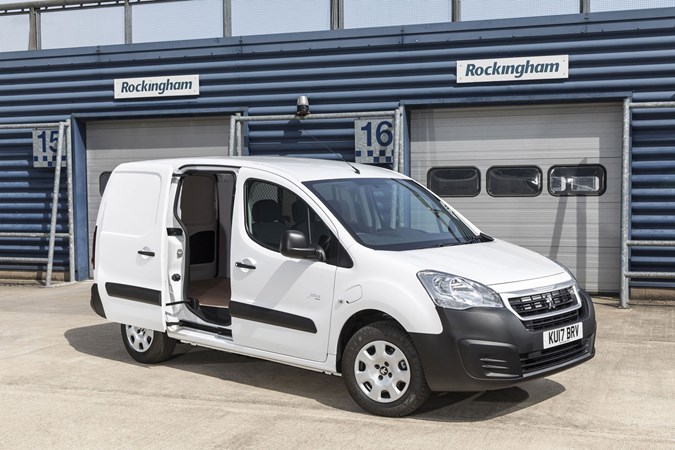
Once you’re already travelling at higher speeds, acceleration isn’t quite as keen. But the Partner Electric is certainly quick enough to keep up with most regular traffic. There are no gears, you simply select drive and reverse via a rotary controller on the dashboard, so it’s very much like driving a conventional automatic.
One major difference, though, is the engine braking. Whenever you let off the accelerator, the electric motor turns into a generator, recovering energy from the slowing down process. This is quite aggressive, so you can drive without touching the actual brakes at all a lot of the time.
Such ‘one pedal’ driving also helps to reduce running costs, as you’ll find brake pads and discs last far longer.
Ride comfort is good, too – though the soft suspension does mean there’s quite a bit of rolling around in the corners. This despite having the battering located below the load area floor, lowering the centre of gravity.
Peugeot Partner Electric L2 load area dimensions vs L1 and rivals
These are the major dimensions of the Peugeot Partner L2 Electric:
- Maximum load length: 2,050mm
- Maximum load width: 1,380mm
- Width between the wheelarches: 1,230mm
- Maximum load height: 1,250mm
- Load volume: 3.7 cubic metres
- Maximum payload: 552kg
Wondering about the cubic metre figure? All Partner Electric vans include the Multi Flex passenger seat as standard, which can be flipped out of the way. Together with a folding bulkhead this increases the available load length to 3,250mm and the load volume to 4.1 cubic metres.
The Nissan e-NV200’s 4.2 cubic metres are all contained within the load area.
The Nissan and the Renault Kangoo ZE also offer higher payload capability.
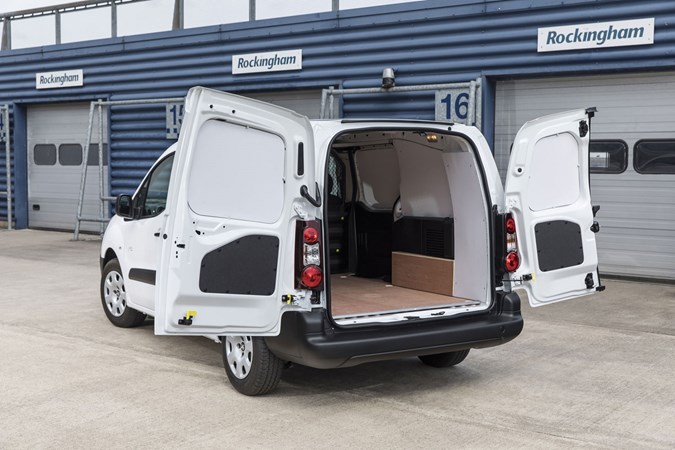
Compared withthe Partner L1 Electric, the L2 Electric has a load area 250mm longer. The L1’s load volume is 3.3 cubic metres.
You get twin sliding side doors as standard on the Partner Electric.
Running costs and eco credentials
The general rule of thumb is that electric vans are more expensive to buy than their diesel alternatives, but cheaper to run.
The lower running costs come from a number of factors – including cheaper per mile ‘fuel’ costs, reduced maintenance, and other perks such as free parking in many areas and reduced taxation.
To help you find out whether going green would suit you, Peugeot has a total cost of ownership calculator that compares diesel to electric based on specific usage. Ask your local dealer for more info.
Other positive attributes include government grants towards the cost of purchase and installation of chargers, and of course the zero CO2 – and NOx – emissions in motion. Someday soon electric vans will be the only vans allowed into many city centres, so you’d better get used to the idea…
The batteries, incidentally, are covered by an eight-year warranty; the rest of the van gets the usual three years.
Verdict
The Partner Electric is another decent electric van. Built on the considerable strengths of the non-electric Partner, it should be a tempting choice for those in the market for such green vansportation, especially given it undercuts rivals on price while including rapid charging as standard.
However, those rivals offer more load space on the one hand, and (soon) far greater driving range on the other. So consider your priorities carefully…
Rivals:
Also read:
>> The Parkers Vans guide to electric vans
>> Government to invest £7.5m in workplace electric vehicle chargers
>> Should you be buying an electric van?
>> Study finds electric van range ‘almost halves’ with full payload
Read the full Peugeot Partner review on Parkers Vans
Just so you know, we may receive a commission or other compensation from the links on this website - read why you should trust us.


